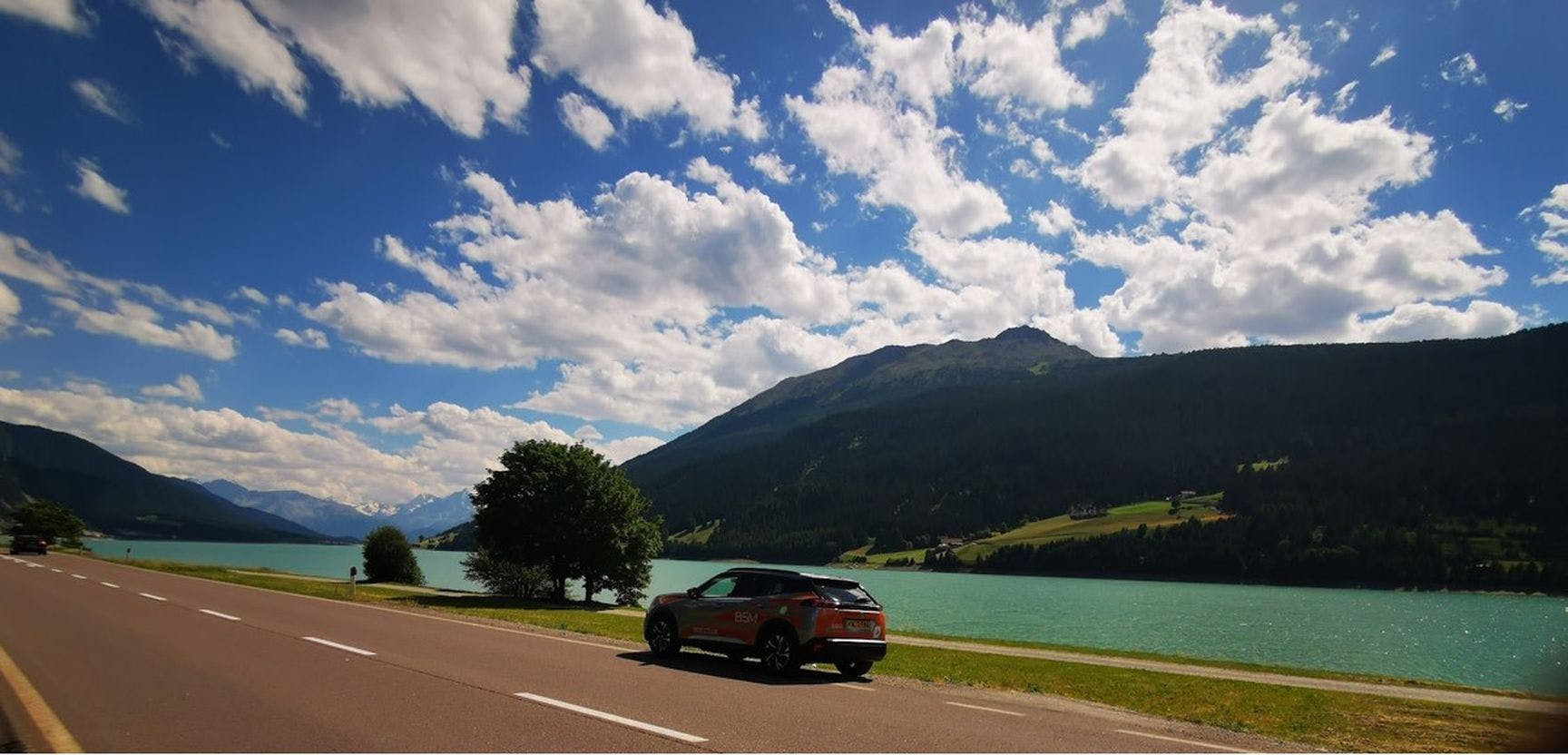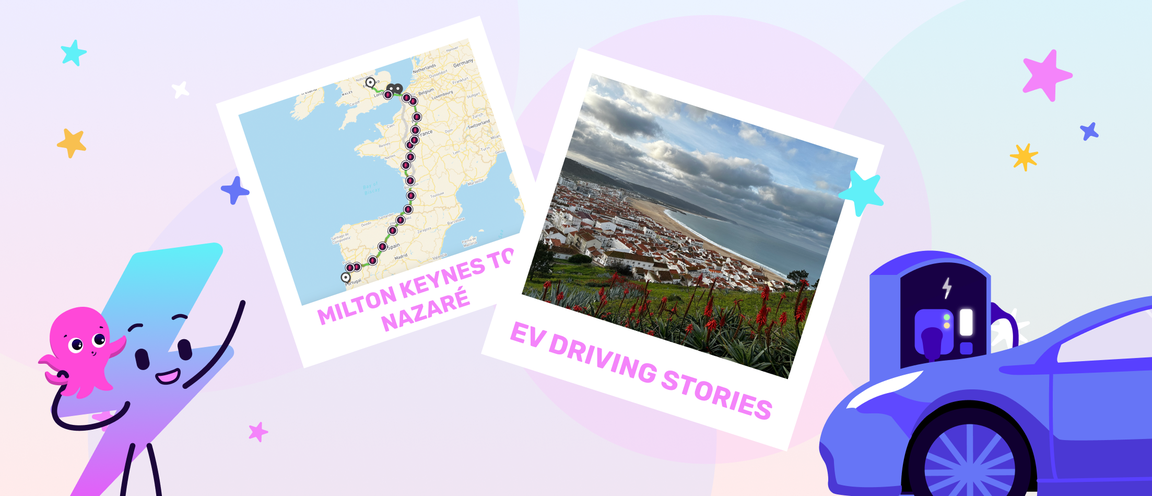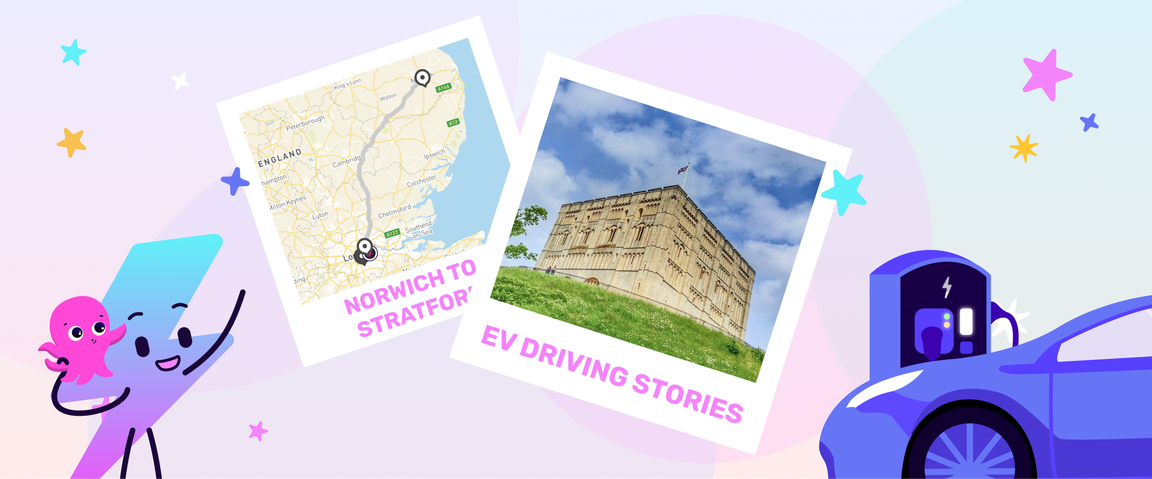April 2022
|Last updated:April 2024
London to Montenegro (3,500-mile EV road trip)
Think EV's are just for cities and short distances? Think again.
Meet Damir Vujevic, a BSM driving instructor from London. He's just completed a huge 3,500-mile roundtrip journey across Europe and wants to share his experiences and top tips for any other EV adventurers out there.
Let’s get plugged in…
After 24 years of working for Mars and making chocolate, I decided to retire and change my career - this is how I became a Driving Instructor with BSM. With the delivery of a brand-new Peugeot e-2008 came the idea to take a challenging journey from London to Tivat, Montenegro. A 3,500-mile round trip.
Once I had planned the trip, downloaded some apps, and received my free Electrocard, we were ready to go...
Day 1
Fully charged, we left London at midnight on the 1st of July. Arriving at Folkestone, I was pleasantly surprised that our first fast charge (50 kWh) was free and took about 45 minutes. It was then time to board the train and head to France!
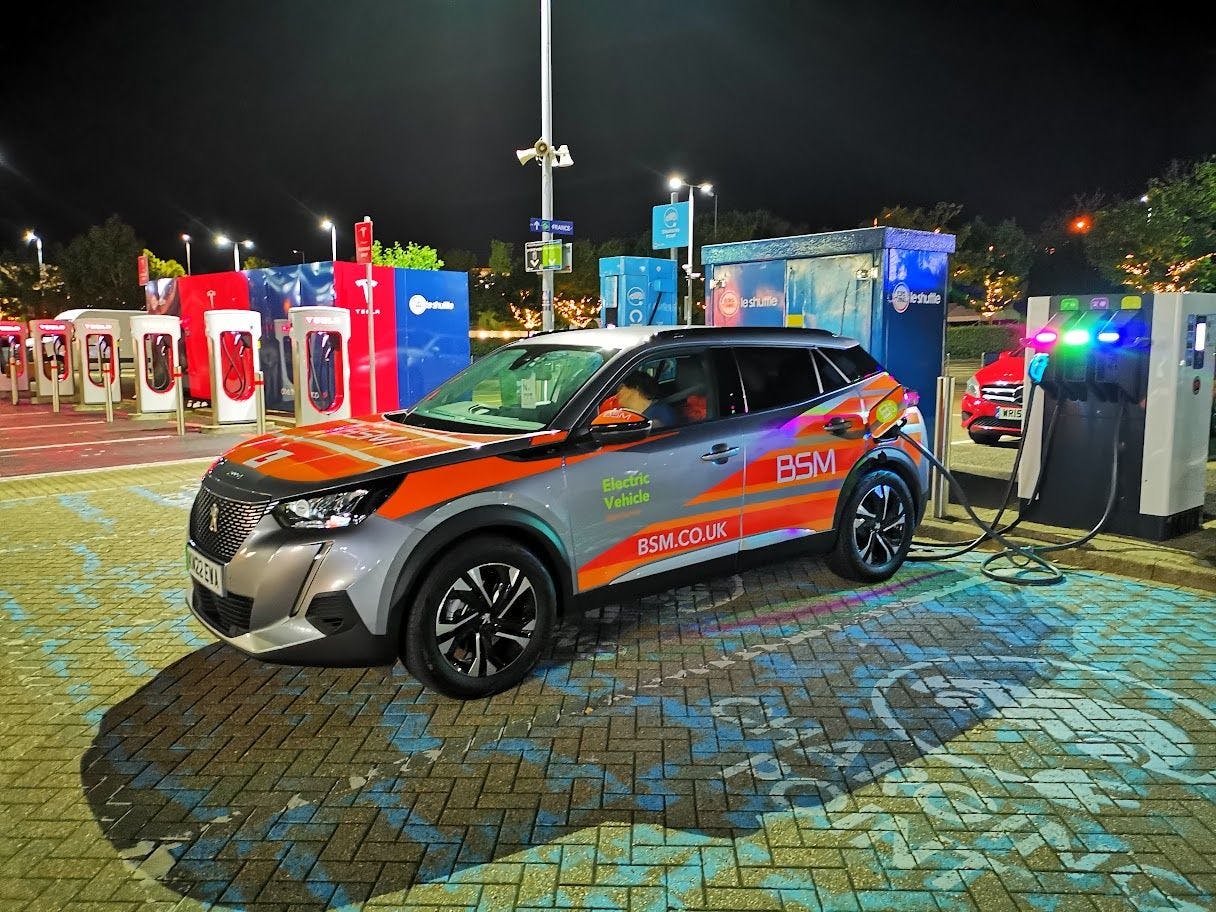
Charging at Folkestone
Driving through France, my phone had little signal, and very quickly, this became a problem as the charger we arrived at could only be accessed via the app. Fortunately, I connected to my son’s hotspot and managed to charge without any further issues. My recommendation? Ensure your phone works abroad before leaving the UK!
For the third stop, with 30 miles range left, we needed a special badge to charge the car. After talking to staff at the service station, they enabled the charge for a fee of €12.
At the fourth stop, we came off the motorway and looked for a charging station at the local shopping centre. They were all fast chargers (350 kWh), but it was busy with shoppers, so we had to wait 10 min for the first available slot. Charging was fast but expensive, fully charged cost us about £35.
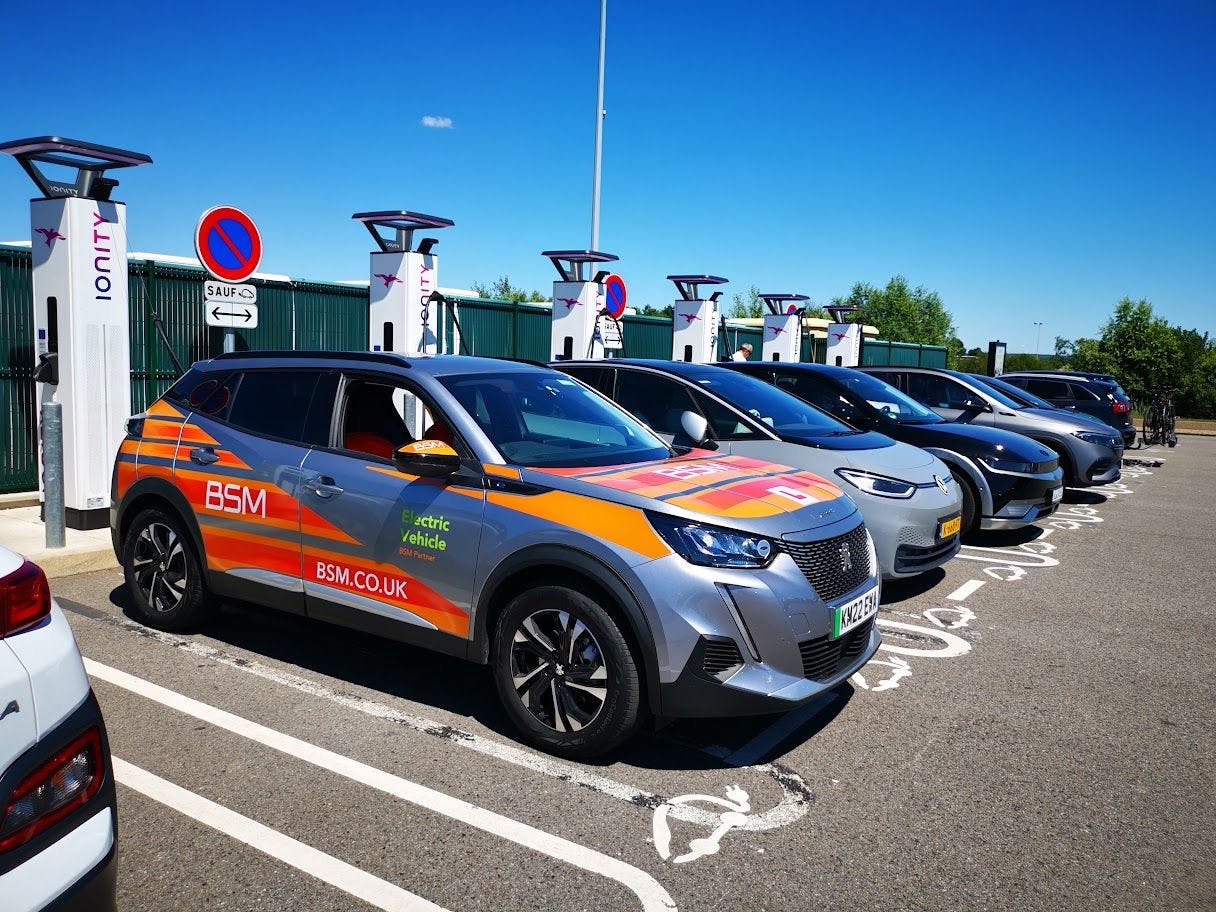
Charging at an IONITY station in France
Stops five and six were very easy thanks to my Electrocard, which automatically linked the bill to my direct debit (a feature that Octopus Energy customers can apply).
By the end of the first day, we had driven 650 miles, travelling through France and stopping in Germany at Ulm for the night.
On this first day, we tested the car by driving as I would a petrol or diesel vehicle. The range of a fully charged Peugeot 2008-e is advertised as 210 miles, but realistically, it is about 180 miles (dependent on speed and other factors).
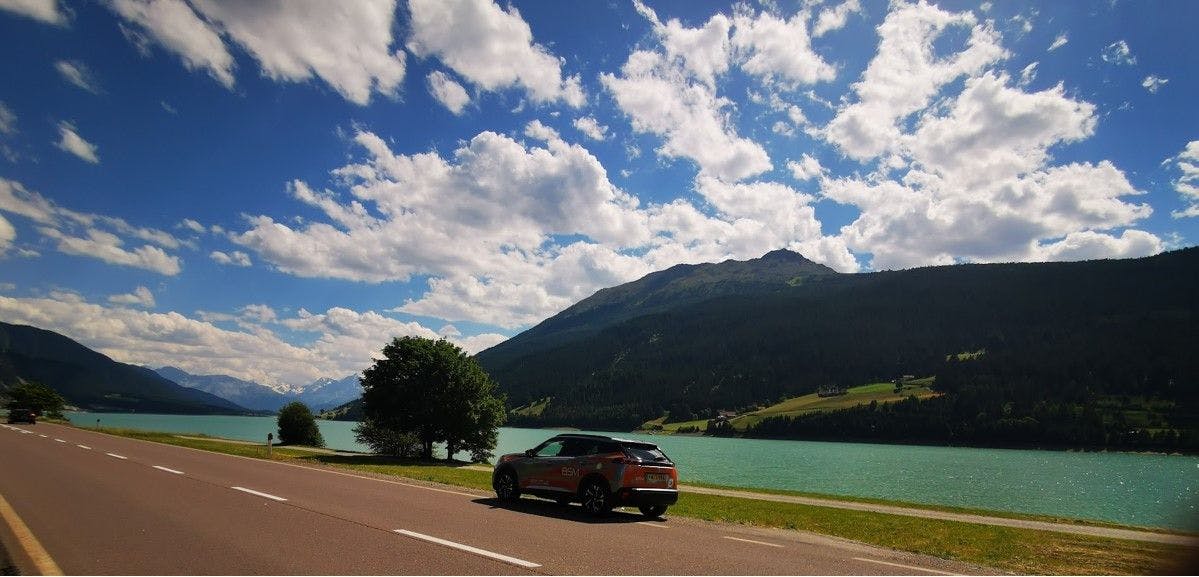
Driving along the French-Swiss border
Motorway speed limits in Europe are about 80mph, and we were driving between 75mph and 80mph. When having travelled 100 miles at this speed, we had a remaining range of 30 miles - this meant we had lost about 80 miles from our original range of 210 miles! We changed tactics for the next day and decided to drive 100km/h (62 mph) to see how that would affect our range...
Day 2
After a lovely breakfast (and with a full charge!), we were ready to go. Our destination: Merano, North Italy.
Driving through Austria, we only charged once; using our Electrocard to access the charger - so easy!
By the end of day two, we had driven 890 miles.
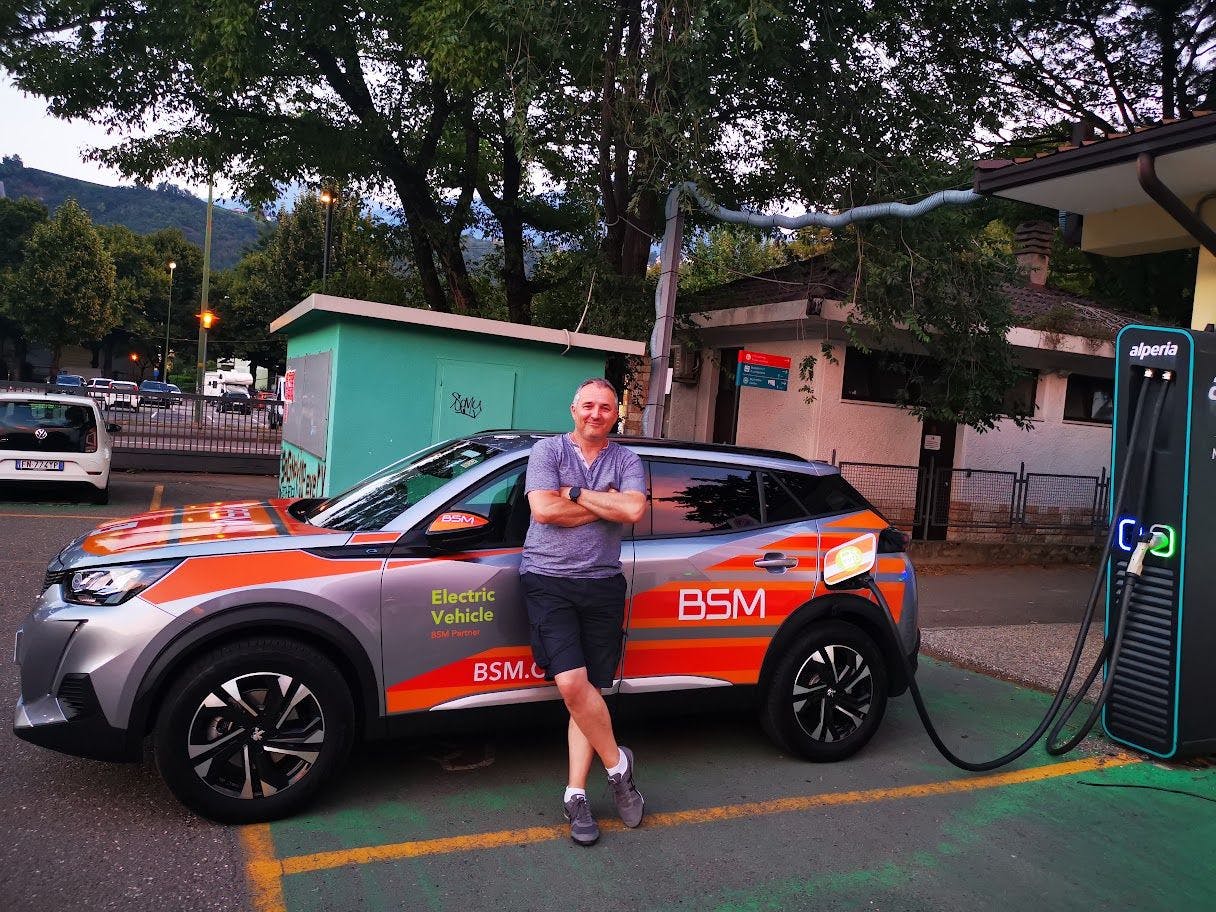
Charging in Merano, Italy
Days 3 - 8
We left Merano fully charged. Not all Italian motorway service stations have chargers, so, for the next charge, we had to go off the motorway. The first stop was fast and smooth. The second charge was not so easy. As we approached Slovenia, we came off the motorway and found a charger behind a local hospital. It was covered in spider webs and took about 20 minutes to make the connection and start charging.
After a very short trip through Slovenia, we arrived in Croatia. All Croatian service stations had fast chargers. We made two more stops to charge the car, all without issue.
At the end of day three, we arrived in Split, Croatia, bringing our total journey to 1430 miles. We stayed in Split for five days and charged at various shopping centres, with ease.
After five days in Croatia, it was time to travel to Tivat, Montenegro.
Days 9 - 30
The drive to Tivat was about 200 miles. Leaving fully charged, our first charging stop came after 120 miles, with the second charging stop just before the Montenegrin border. I could not find any fast chargers in Montenegro, so we decided to stop and charge at Dubrovnik airport. Again, we needed a special card to access the charger, so I called their helpline. The staff were very polite and helpful over the phone - they enabled the charger for us, and it was free!
Arriving in Montenegro, we stayed in the lovely Mediterranean town of Tivat for almost 3 weeks.
There were no fast charges in all of Montenegro. The only charger in town was at Porto Montenegro, a multimillion yacht marina. Parking was secure and free, and it was easy to leave the car overnight.
Time passed quickly, and we eventually had to start making our way back to London.
Day 31 (return)
Not wanting to retrace our route, the new plan was to drive through Croatia, Slovenia, Austria, Germany, Belgium and France. Our first stop: Zagreb (Croatia), 450 miles away.
Due to uphill roads, the journey took us a little longer than expected, as we had to charge the car more frequently (all without issue). However, we had the exciting opportunity to drive over the new Peljesac bridge, which was opened less than 48 hours before.
I can say I am the first BSM driver to have crossed that bridge.
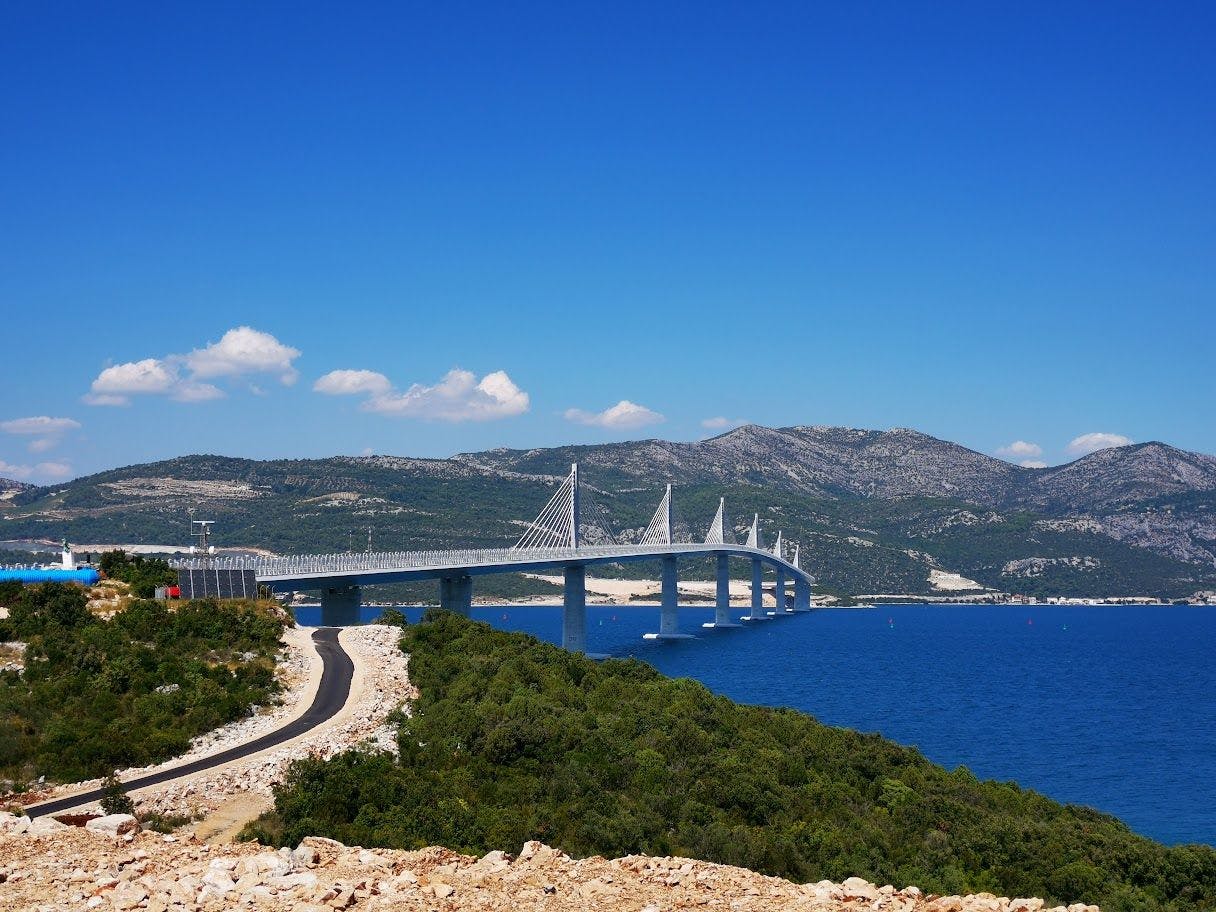
Peljesac Bridge, Croatia
Day 32
On the second day of our return journey, we travelled from Zagreb (Croatia) to Wurzburg (Germany). Using mostly 350 kWh chargers through Austria and Germany, we were charged to 90% in about 35 minutes. Previous chargers with speeds of 50 kWh would take about 45 min to 50 min.
We arrived in Wurzburg at the expected time, with one day to go.
Day 33 - home!
The drive from Germany to France (through Belgium) went as expected, and we arrived at the Channel Tunnel in Calais, 2.5 hours before our departure.
I had planned my charging so that we arrived in Calais with 60 miles of range left, and was looking forward to free fast chargers, like those Folkestone. I was disappointed.
All the chargers were in the process of being replaced and were out of order. Only one old charger was left, but the fast-charging port was broken. With no alternative, I connected to the 7 kWh charger, which only gave us an additional 10 miles in range.
Due to the lack of fast charging, our new plan was to stop and charge once more in the UK, so that we could make it home.
Having searched the charging map, I found the next charger just after Folkestone, at a motorway station. It was a quick charger (150 kWh), so we only stopped for 20 mins, and we were ready to go!
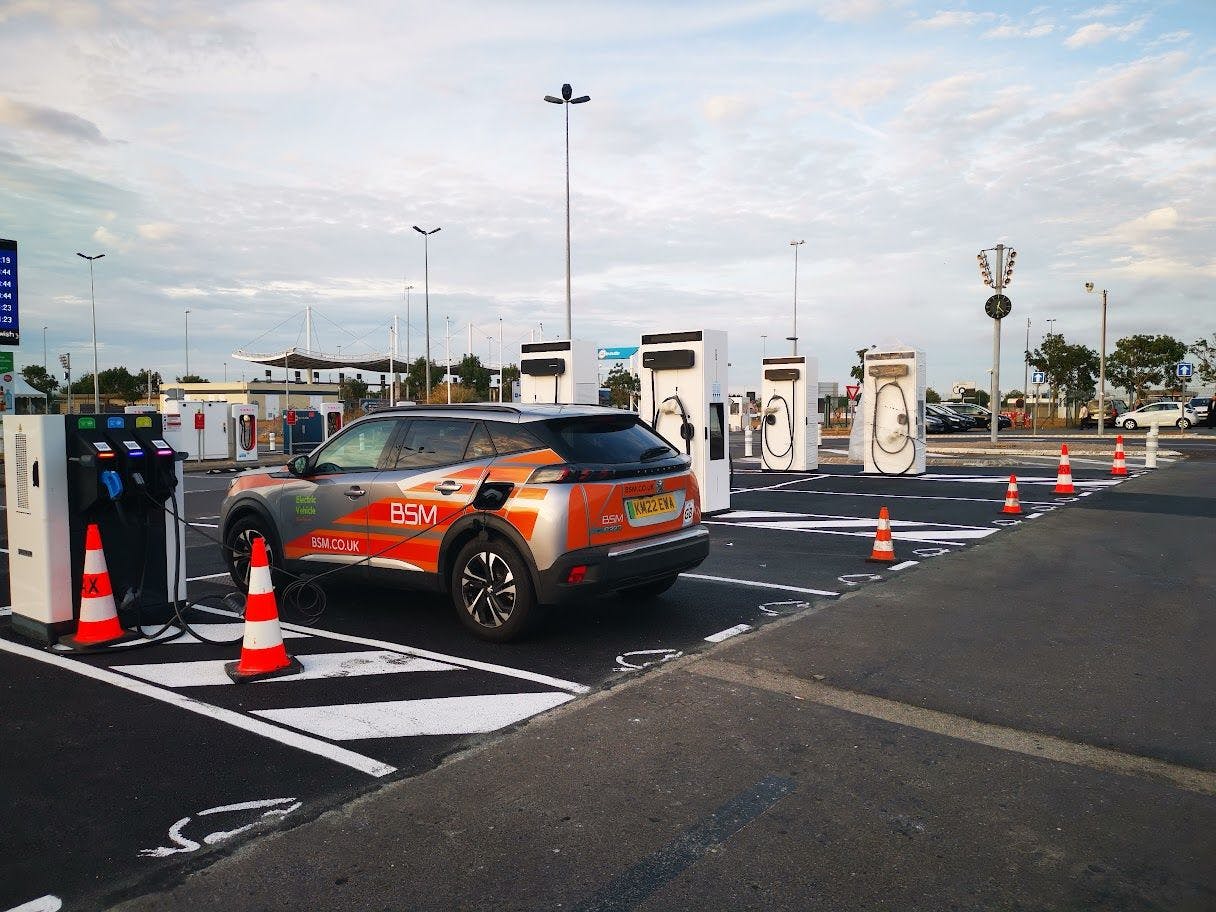
Charging in Calais
Verdict - EV driving in Europe is easy!
In total, we completed about 3,500 miles, and we were never without charge!
The total cost for charging was about £440. If we were to work out the same trip for a petrol vehicle (with fuel consumption at 45 mpg), the total would increase to around £600!
Admittedly, on long trips like this, the journey is slower, and you have to do some route planning in advance. There are many different charging networks across Europe, and while for some you will need to download their apps, the Electroverse app will cover most.
The three most helpful apps for this journey were: Octopus Electroverse, NextCharge, and PlugShare.
I use this car for my job as a driving instructor, and I think it is perfect. It’s excellent - not just for my job - but for everyday trips. Another benefit of using an electric car in the UK is that many places offer free chargers (such as shopping centres and supermarkets)!
Moving forward, I don't think I will drive anything other than an electric car!
Feeling enlightened or do you think something was missing? Let us know by sharing your feedback.
Interested in learning more? Head over to our Electroverse Community area for more electrifying content.
